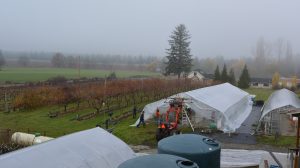
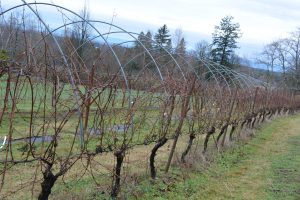
We’re expected to get fog, rain, frost, maybe even snow, and everything in between, in the coming weeks, but we don’t get tornadoes here in the PNW, so stop blaming them for your mess in the shed and barn. No judgement here, our work areas are in serious need of some postseason TLC, and we have a few hacks to help keep on top of homesteading to-do list so you can make the most of your time next season.
Clean, sharpen, and oil your tools.
Aside from the land they work, tools are the most important investment a farmer or gardener can make. While, we all strive to care for our tools on a regular basis, it’s easy for maintenance to get away from us during peak season. The start of the off season signals the perfect time to give your tools some extra TLC.
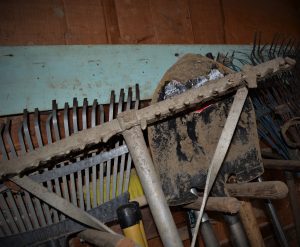 Excess soil and organic matter left on tools have the potential to rust your tools as well as spread disease, fungus, weed seed and pest larvae. A postseason scrub with a little bleach and dish soap isn’t a bad idea. Any tools used on plants with known diseases should be cleaned and disinfected immediately after use. It’d be a good idea to clean and sanitize any starting containers or pots while you’re at it, too. Tools that come in contact with soil regularly (like rakes, trowels, shoves, weeders, etc.) should be hosed down and cleaned regularly. But if time has gotten away from you and your tools are sporting that extra rusty look, some steel wool, sandpaper, or a wire brush can be highly effective at loosening any stubborn rust or debris. Don’t forget to use gloves and eye protection as a safety precaution when cleaning your tools. Wooden handled tools can be moisturized with linseed oil, or something of the like, to keep them from cracking or rotting as well.
Excess soil and organic matter left on tools have the potential to rust your tools as well as spread disease, fungus, weed seed and pest larvae. A postseason scrub with a little bleach and dish soap isn’t a bad idea. Any tools used on plants with known diseases should be cleaned and disinfected immediately after use. It’d be a good idea to clean and sanitize any starting containers or pots while you’re at it, too. Tools that come in contact with soil regularly (like rakes, trowels, shoves, weeders, etc.) should be hosed down and cleaned regularly. But if time has gotten away from you and your tools are sporting that extra rusty look, some steel wool, sandpaper, or a wire brush can be highly effective at loosening any stubborn rust or debris. Don’t forget to use gloves and eye protection as a safety precaution when cleaning your tools. Wooden handled tools can be moisturized with linseed oil, or something of the like, to keep them from cracking or rotting as well.
Fun Pro Tip: A light coating of used motor oil from the lawn mower or tractor is an efficient and cost effective way to keep tools fresh and in working condition while they’re stored over the winter, or any time of year for that matter.
Super Pro Tip: Store your tools in a bucket with a mixture of sand and oil to keep their edges sharp and impeccably rust-free. A quart of oil to about 50 pounds of sand is a good ratio to start with and fits in a 5 gallon bucket beautifully.
Repairing Structures & Supports
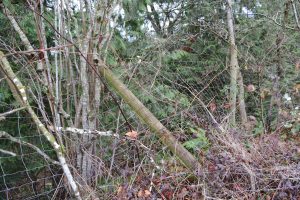 Our farm and garden structures are often the backbone of our successes and failures throughout the season and now is a great time to take stock of all the repairs your homestead has been looming over you. Fences, trellises, greenhouses, farm stands, harvest bins, curing shelves, and doors are just a few suggestions that come to mind.
Our farm and garden structures are often the backbone of our successes and failures throughout the season and now is a great time to take stock of all the repairs your homestead has been looming over you. Fences, trellises, greenhouses, farm stands, harvest bins, curing shelves, and doors are just a few suggestions that come to mind. 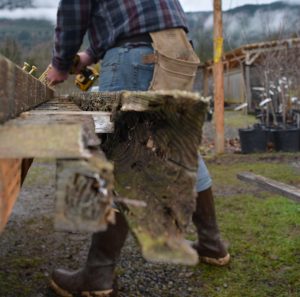
If you had a bumper crop of cucumbers, beans, peas, or tomatoes this season, you probably need to give those growing structures some extra attention. If your wooden structures have seen a few seasons or more, now might be the time to think about replacing them. We recommend metal based structures over wood whenever possible. Fencing materials and hog wire are particularly useful and recommended for creating structures that will last much longer than wood. Many farm and garden stores are having sales this time of year, and chances are, there are some used materials on available locally just waiting for you to give them a new home. We recommend our local sustainability champion, The Re-Store, for inexpensive, used materials and a surplus of inspiration. Also be sure you are subscribed to our local Whatcom Farmers Listserv. Because you know what they say, one farmer’s trash is another home gardener’s treasure… and an excellent resource for garden nutrients, DIY supplies, and who knows, maybe a little advice and some pro tips no the side.
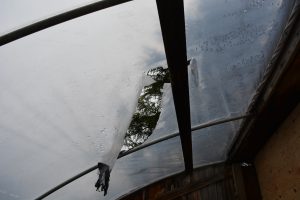

If you grow your heat loving crops in a poly covered hoophouse or tunnel, it’s a good idea to remove the poly or covering every couple of years to allow the rain to wash accumulated fertilizer salts out of your soil. Winter is a great time to do this- take the poly off in late fall, then re-install in early April to warm up the soil for spring planting.

